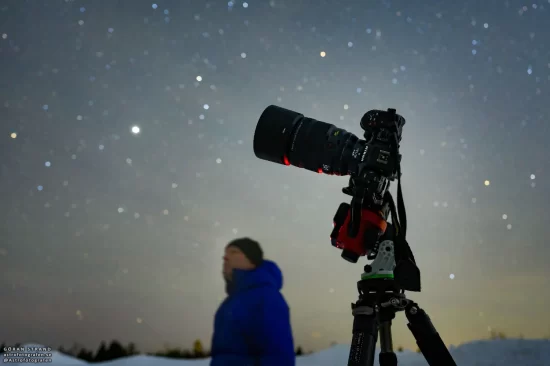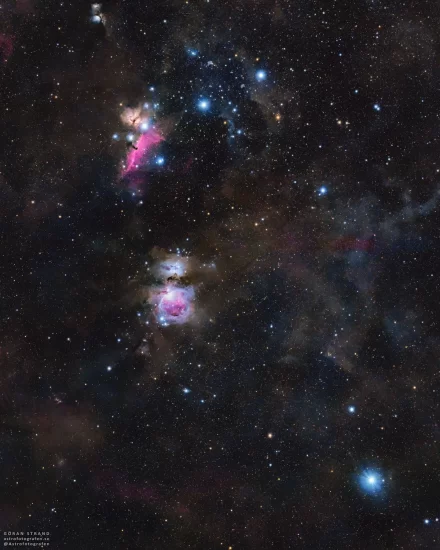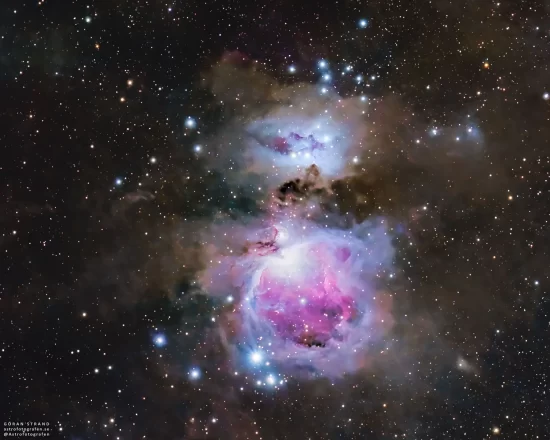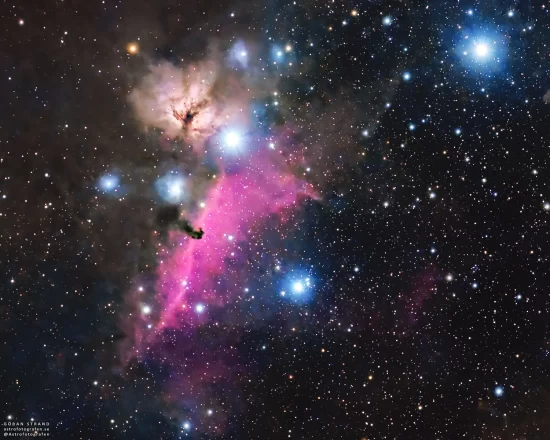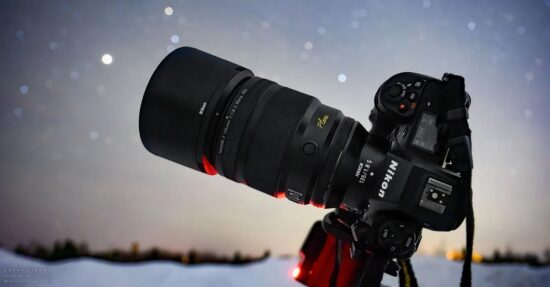
Another Nikon NIKKOR Z 135mm f/1,8 S Plena lens review for astrophotography (see also this blog guest post) – this time by Göran Strand (website \ Instagram | Facebook | Twitter | YouTube):
For the last couple of weeks, I’ve been using the new Nikon Z 135mm f/1.8 Plena lens. The optical design of this lens gives a bigger image which results in better corner performance. For me as an astrophotographer, this is a really good thing since the lens produces point-shaped stars all the way out to the corners. On most lenses, you get quite bad stars in the corners resulting in a smaller field of view since you need to crop the image.
The build quality is nothing but stellar and the lens handles really well with its weight and balance. The focal length of 135mm is quite useful in the night sky making it possible to capture large portions of the sky.
I had the lens for quite some time but the weather has been nothing but cloudy the past months, but a few days ago I finally some clear skies.
As you can see in the image above, there was a bit of a haze in the air so no top-notch conditions but good enough.
My plan was to take a longer total exposure of the region around Orion’s nebula M42. Orion isn’t that high in the sky here at lat. 63 (Orion was 25° above the horizon) so it isn’t the best object to shoot, but this is the best time of the year for Orion for me so I wanted to capture it before it’s too close to the horizon.
In the image above you can see three 100% crops of the top right corner in one 30-second exposure. As you can see, already at f/1.8 the stars in the corners look really really good. Stopping down to f/4 makes the stars even better. I don’t think I’ve ever seen a regular camera lens produce such pin-point stars in the corners at full aperture as the Nikon Plena. The ability to shoot at f/1.8 instead of f/4 cuts your exposure time by a factor of 4 which is really beneficial in astrophotography. For example, if I were to be exposed for 1 hour at f/4, I could gather the same amount of light in 15 minutes at f/1.8, so being able to use a big aperture and still get pinpoint stars is a big deal in astrophotography.
The final processed image below has a total exposure time of 75 minutes using 30-second sub-exposures at ISO 1600, f/4 on my Nikon Z9. Stacking was done in PixInsight and final processing in Photoshop.
You can also see a couple of 100% crops showing the details in the original image.
For my next session, I will be using the lens at f/1.8 now that I’m confident it will produce good stars at full aperture. Really looking forward to that.
This review was originally posted here. If you have an interesting idea for a guest post, please contact me here.
Using the Nikon NIKKOR Z 135mm f/1.8 S Plena lens for astrophotography
